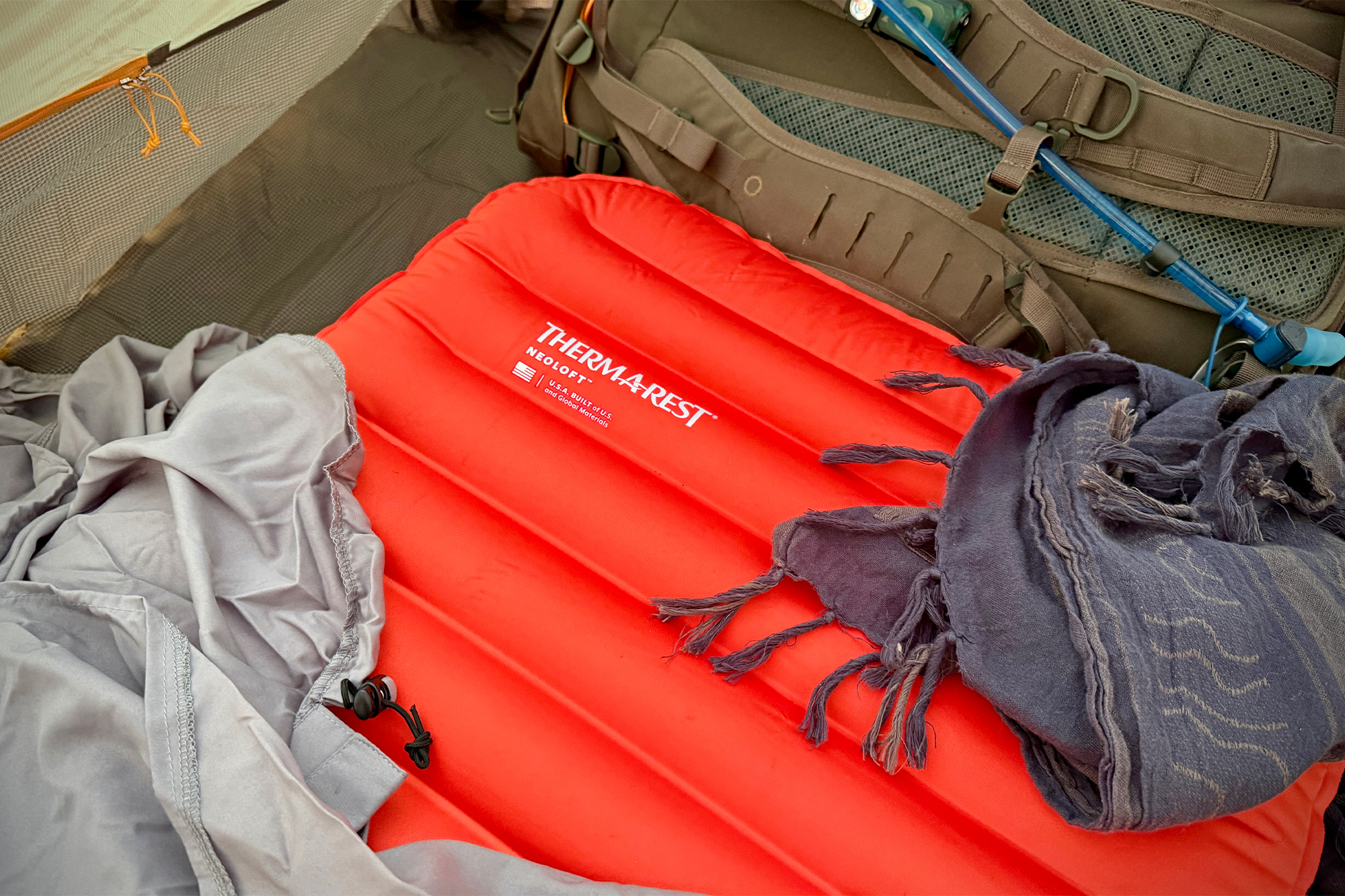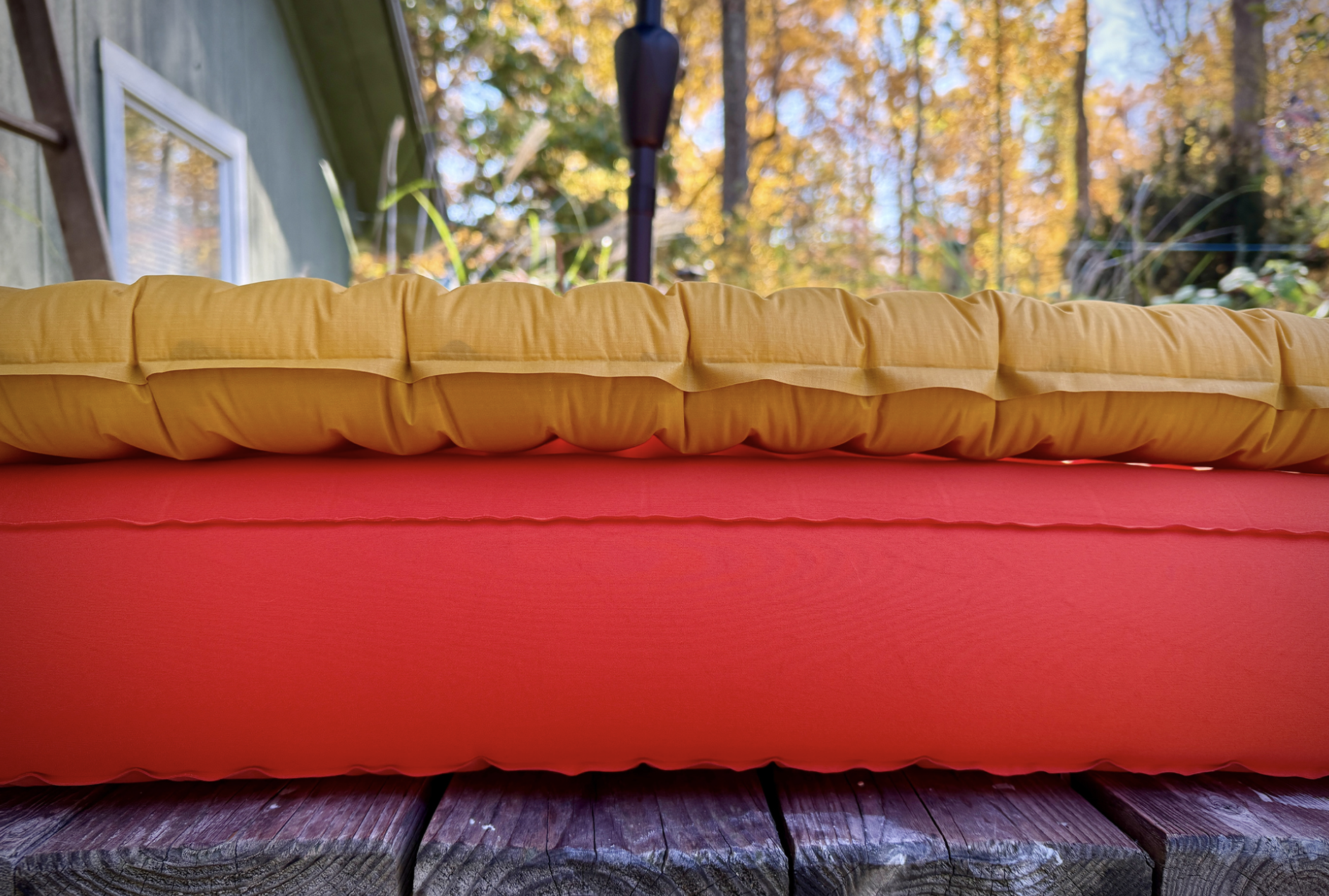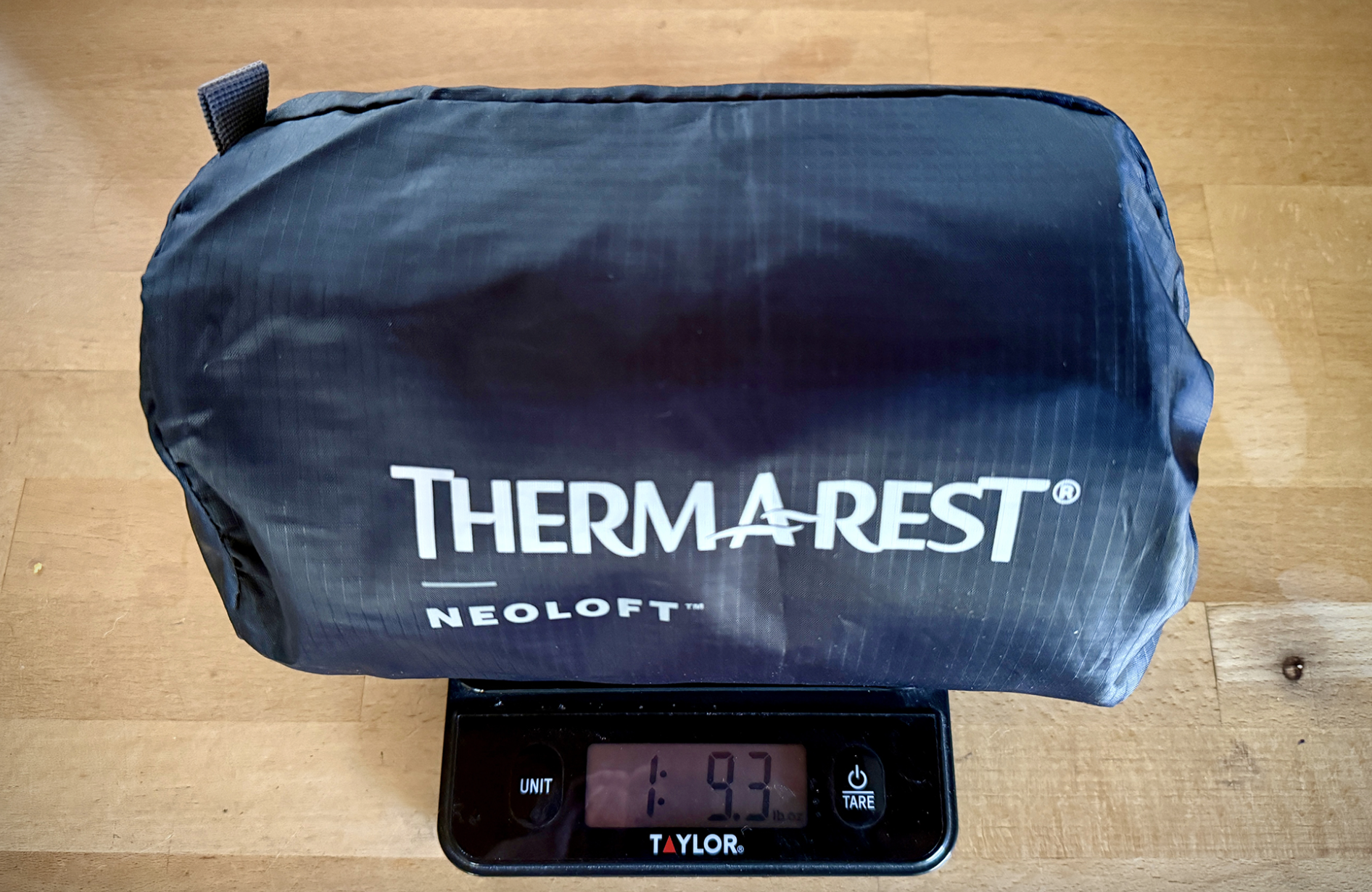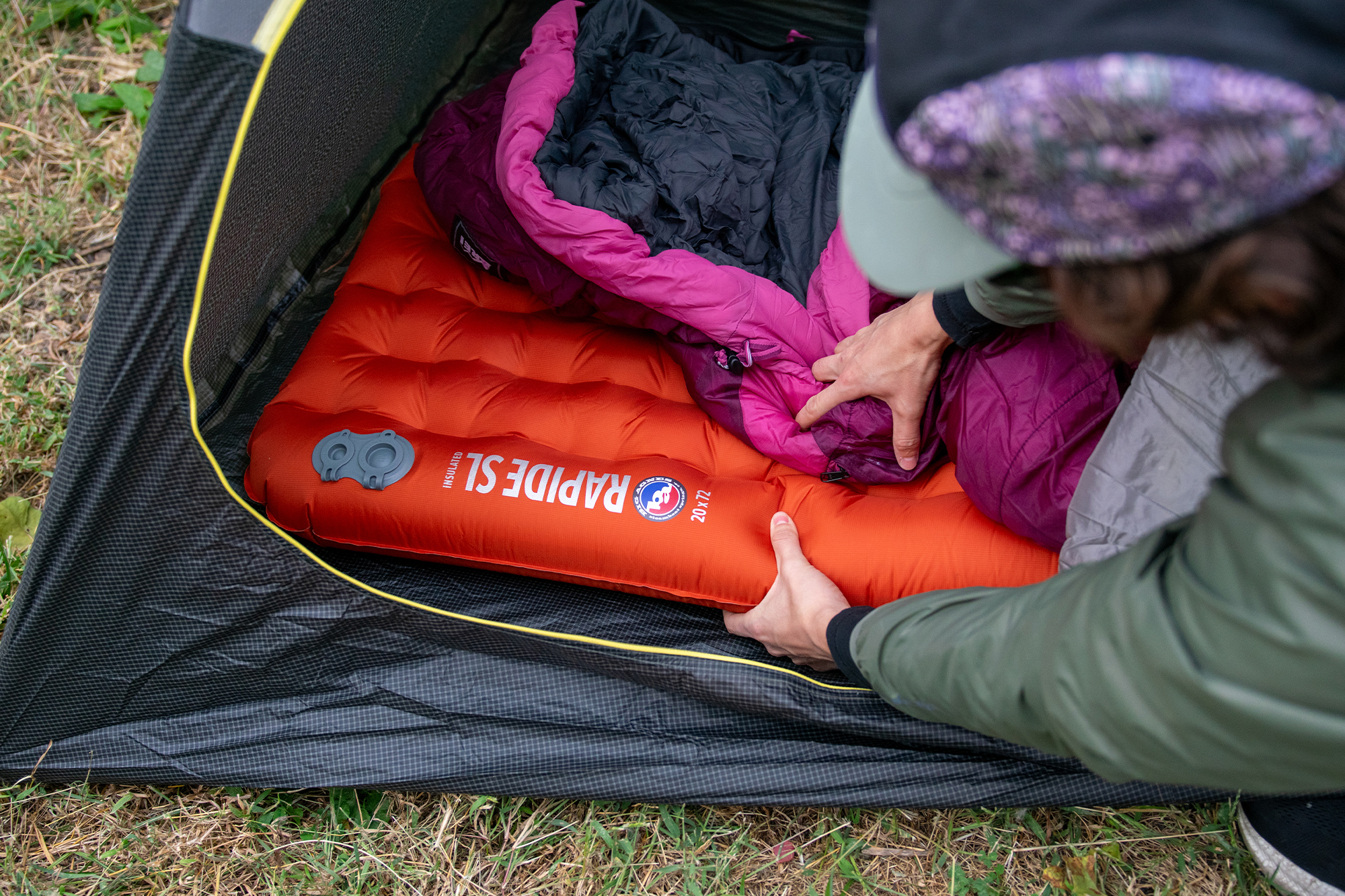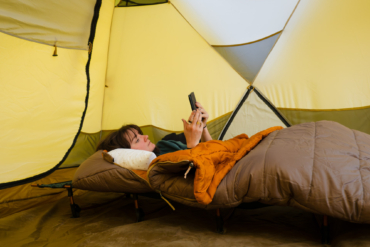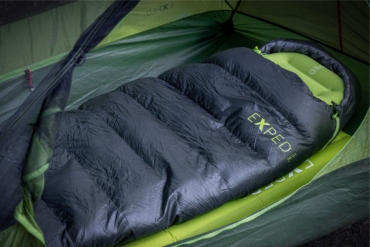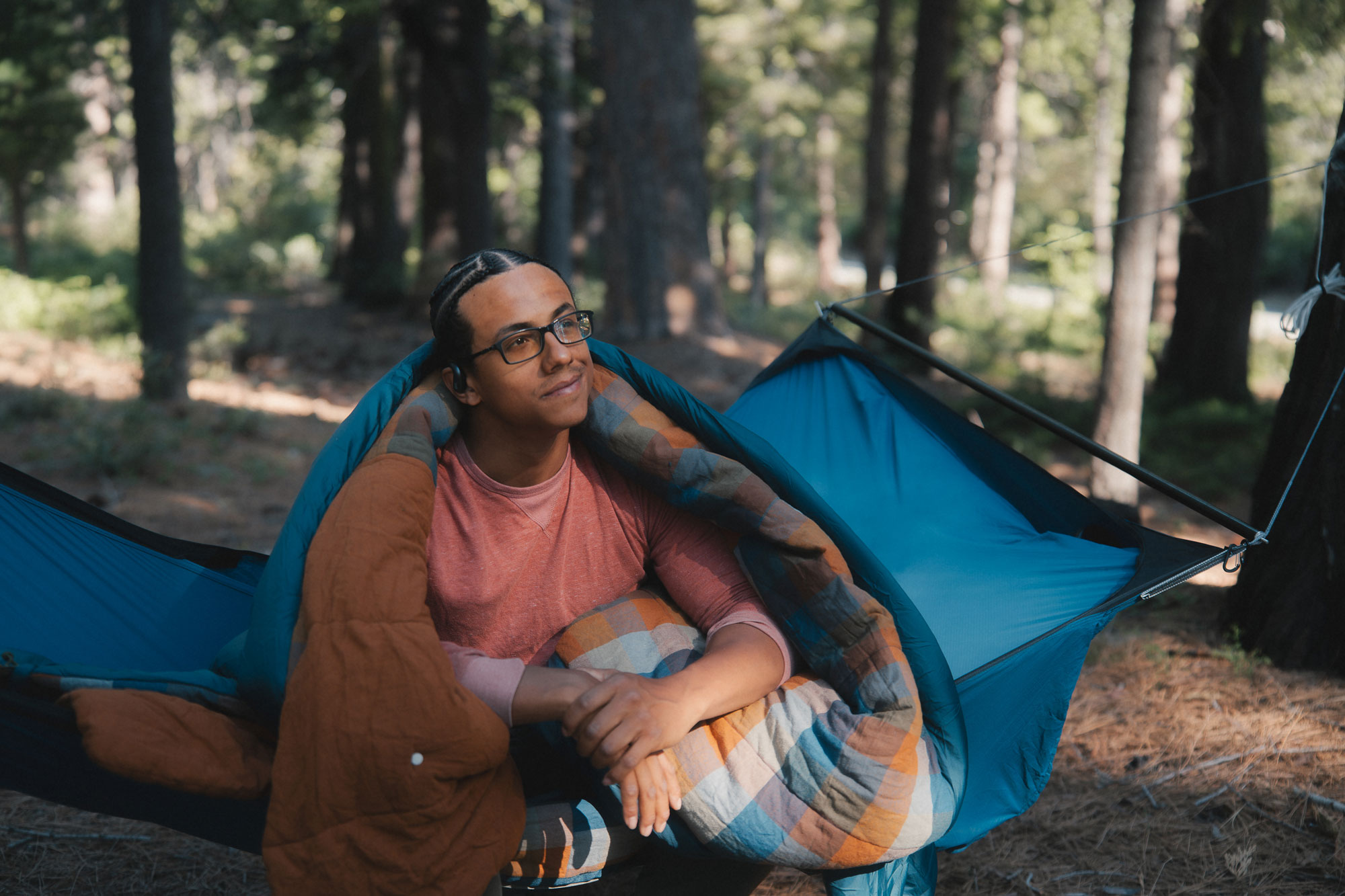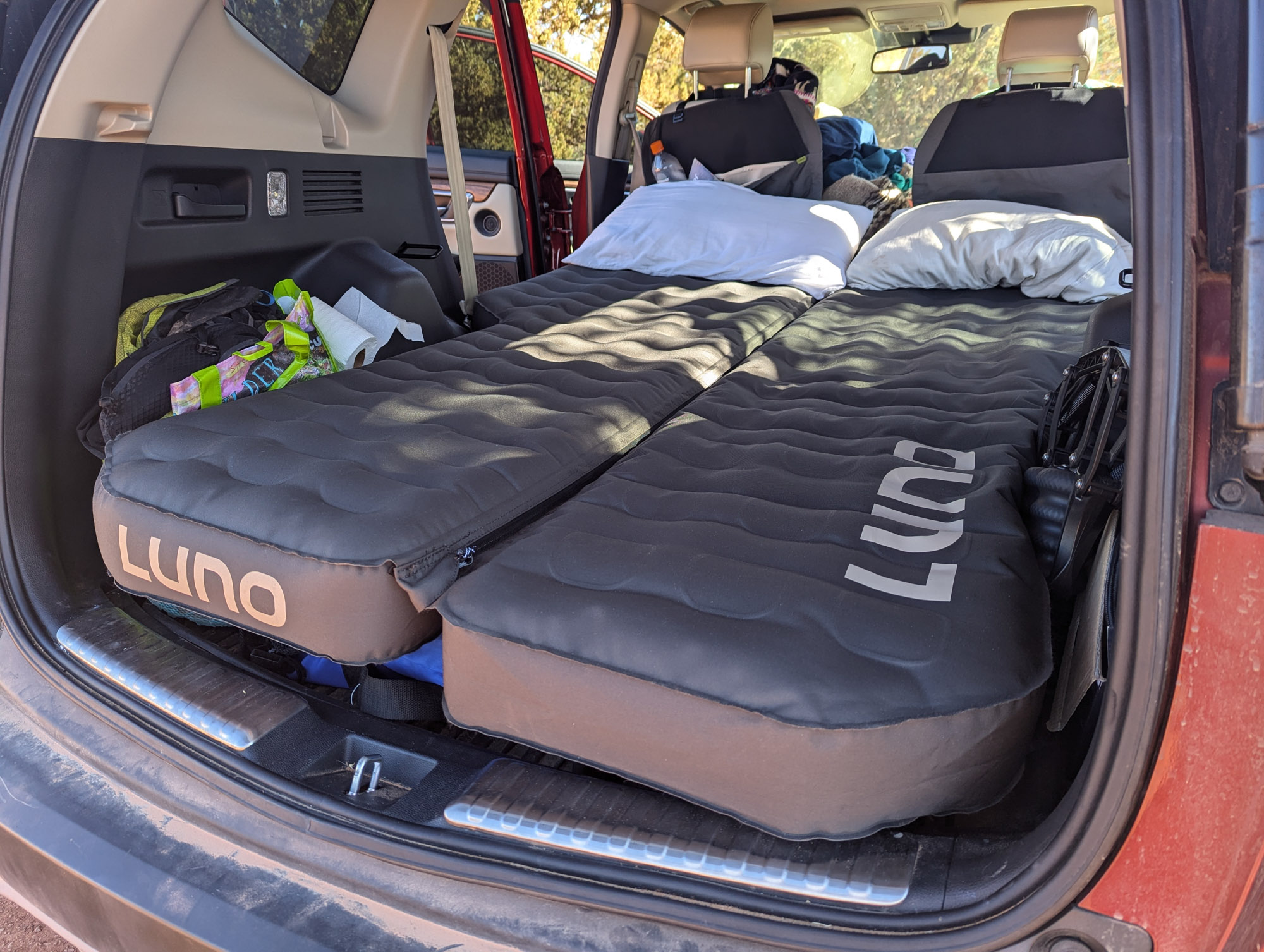By the time I was 15, I was well aware Santa wasn’t putting gifts under the tree for me. But that didn’t make Christmas Day 1997 any less magical — especially given all the new backpacking gear I had asked “him” for. Brimming with excitement, I tore through the crinkling, colorful wrapping paper. All the colors of our tree’s lights splashed reds, greens, and yellows over my eager hands.
Even before I could see it, I knew: The unmistakable shape of a tube — a tube that held my very first inflatable sleeping pad.
For 3 years leading up to that happy morning, I had lugged around an open-cell egg crate sleeping pad on my overnight outdoor adventures. It afforded many nights of sleeping comfortably under the stars or in my tent (even on rocks and roots).
But it was the size of a football tackling dummy when it was rolled up. It never fit inside my pack. As I sat in my flannel pajamas on that fateful morning, I realized those nights were over.
Unfortunately, I soon learned that the sacrifice for packability was a good night’s sleep. I have since accepted sleeping on compact, lightweight sleeping pads that keep me up off the cold ground, even though they all seemed to let the bumps seep through.
This summer, Therm-a-Rest announced the NeoLoft sleeping pad, a 4.6-inch-thick rectangular backpacking sleeping pad. The pad promised to bring comfort to the backcountry, with an R-value of 4.7 for year-round use and the ability to pack down to the size of a Nalgene bottle. The thought of comfortable nights came rushing back. I had to test it out.
In short: Therm-a-Rest has made a huge step forward for backcountry sleeping pads. The NeoLoft packs down ridiculously small for its inflated size, and its insulation makes it appropriate for year-round use. Best of all, the thickness and construction make for a truly comfortable night’s sleep for space-conscious backpackers.
If you’re in the market for backpacking sleeping pads, check out our guide to the Best Backpacking Sleeping Pads.
-
Comfort
9.0
-
Warmth
7.0
-
Packed Size
7.0
-
Material Durability
8.0
- Weight: 1 lb., 9 oz.
- R-value: 4.7
- Thickness: 4.6”
- Lengths Available: 73”
- Width: 22”
- Packed Size: 5.7” x 9.5”
- Shell Fabric: 50D poly knit (top), 75D poly knit (bottom)
- Insulated Type: ThermaCapture aluminized foil
Pros
- 4.6” of soft loft
- 4.7 R-value for year-round comfort
- Quiet
- Very soft and stretchy fabric
- TwinLock valves are easy to use
Cons
- Rolling off this sleeping pad hits different
- Heavier than most backpacking pads
Therm-a-Rest NeoLoft Sleeping Pad Review
Design & Features
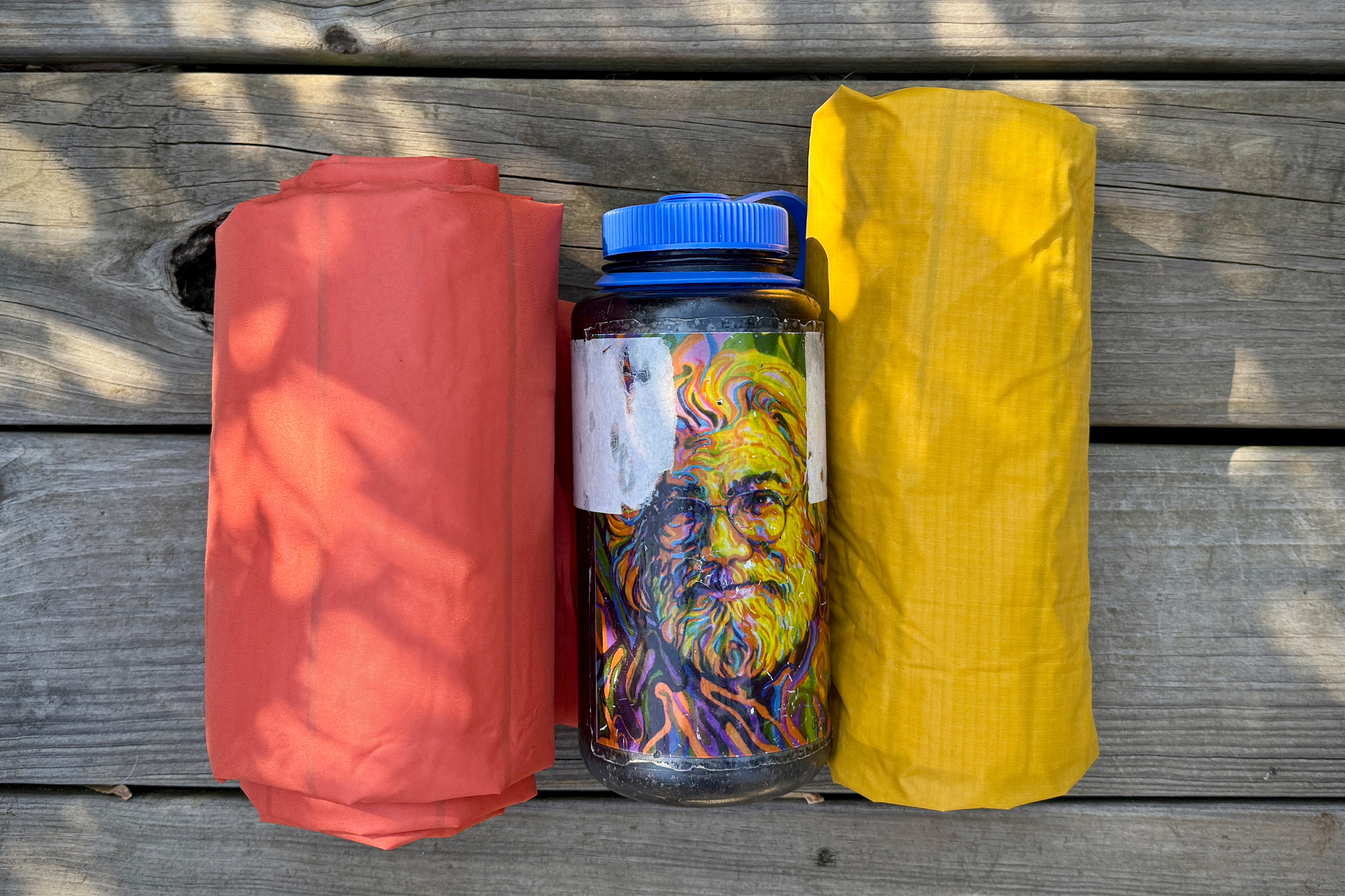
The core of the NeoLoft sleeping pad is an innovative process that Therm-a-Rest coined the ContourCore Matrix. According to the brand, this refers to the combination of design and materials — a soft, durable, stretchy knit fabric — that allows the pad to contour, cushion, insulate, and pack down small.
When it comes to the feel of the NeoLoft, the closest thing I can compare it to is a gel ice pack. In a word, I’d call it “supple.”
The NeoLoft includes a high-volume pump sack. However, I recommend you save that for a backup. As much as I appreciate a pump sack instead of using my breath, it’s not practical in all conditions. Also, it requires more effort than you might want to exude after a day on the trail.
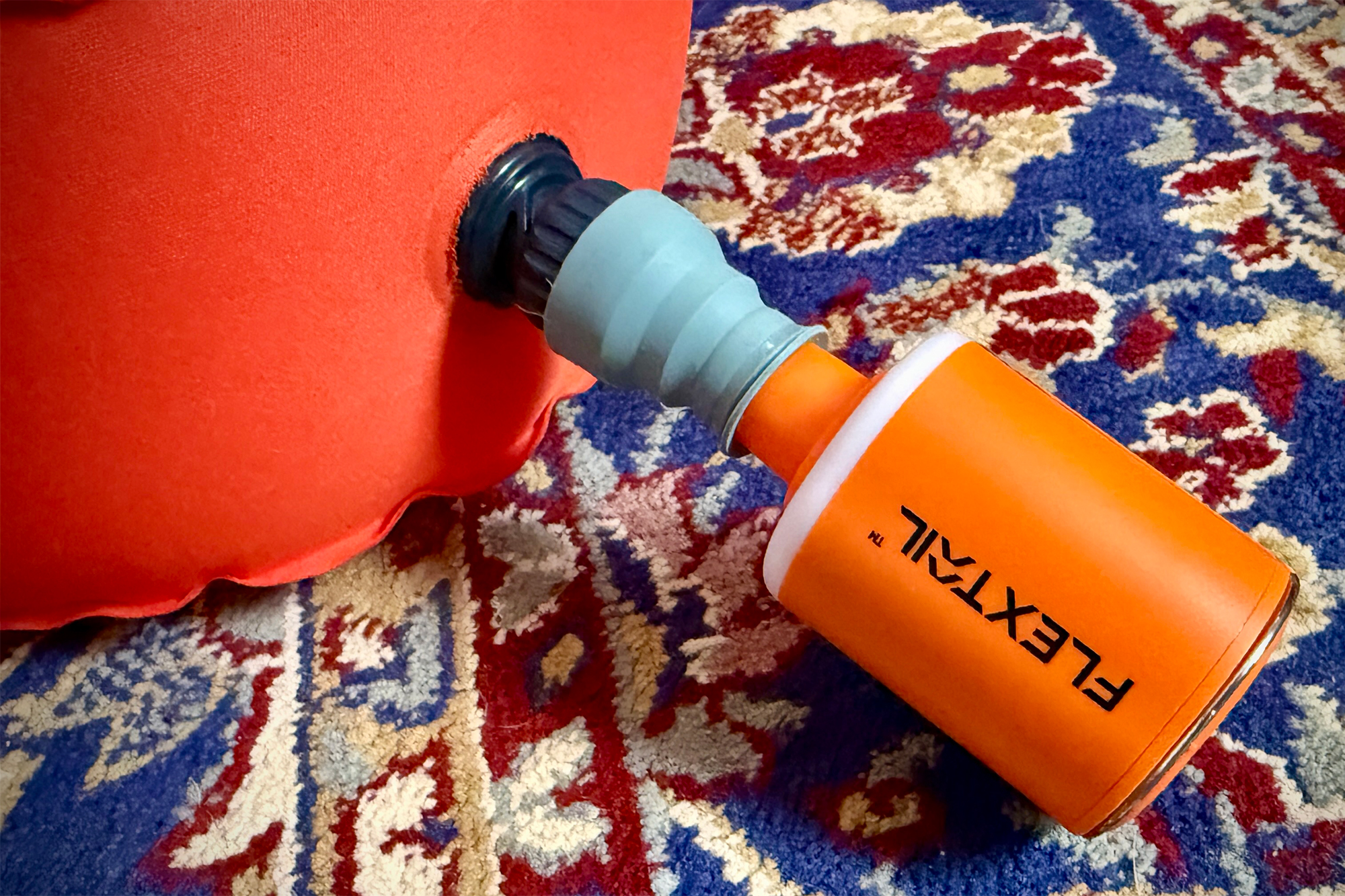
I picked up a Flextail Tiny Pump 2X and will not look back. The Flextail has a built-in light and a series of adapters for various applications. It’ll also last you 10-15 inflations before it needs to be recharged.
TwinLock Valve System
Part of NeoLoft’s packability and comfort derives from its two-valve design. The “In” valve accommodates rapid inflation, while the “Out” valve permits quick deflation. And a few light twists on either valve allow you to fine-tune the firmness of the pad.
This TwinLock Valve System also appears on Therm-a-Rest’s premium-tier sleeping pads, like the MondoKing 3D, LuxuryMap, and NeoAir Topo Luxe. A quick look at the MondoKing 3D reveals where the inspiration for the NeoLoft came from.
Basis for Comparison
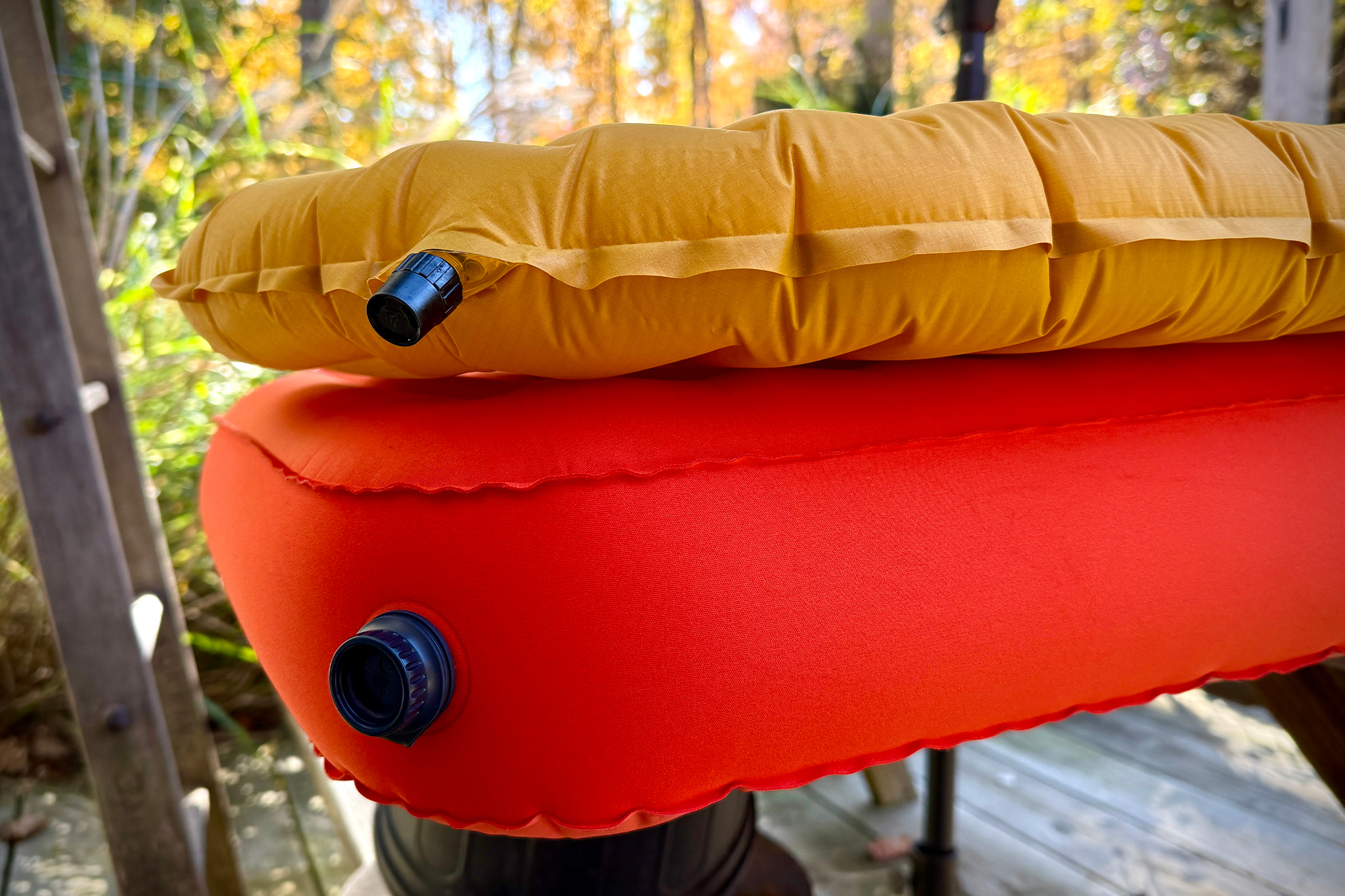
I have been backpacking with a regular-sized Therm-a-Rest NeoAir sleeping pad for the last 8 years. At 20 inches wide, 72 inches long, and 3 inches thick, it’s a benchmark for modern sleeping pads. I will reference it throughout this review as a basis for comparing NeoLoft’s attributes.
As Therm-a-Rest constantly updates its sleeping pad assortment, the NeoAir has long since been replaced. It is now best represented by the NeoAir XLite NXT (which was named GearJunkie’s Best Overall Backpacking Sleeping Pad).
You’ll note that both pads have the same dimensions. The top-level benefit of the NeoAir XLite NXT is that it has almost double the NeoAir’s R-Value. That’s important to consider if you backpack year-round.
In the Field
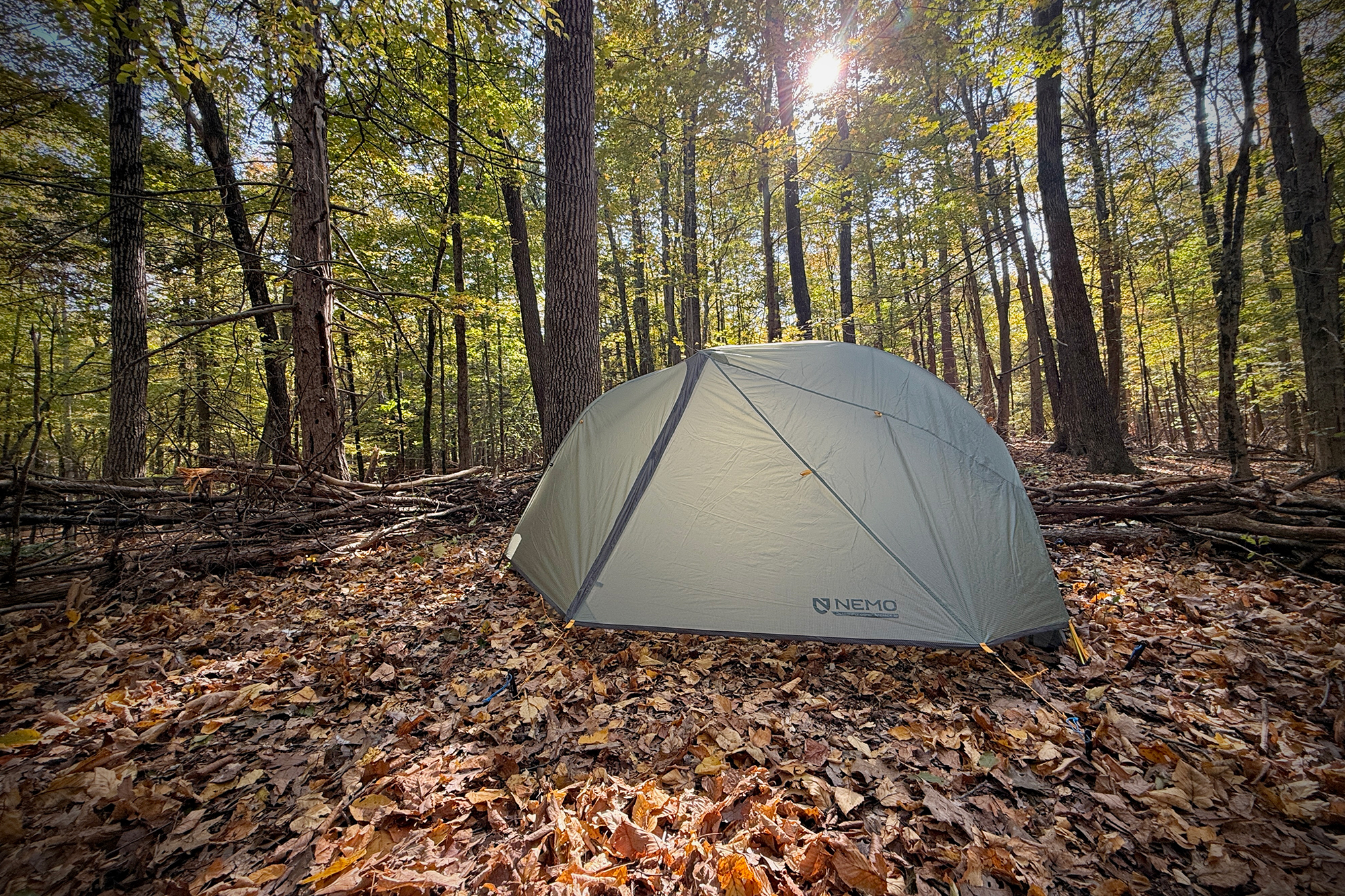
To cover every angle in testing the NeoLoft, I spent two nights in the woods, two in my backyard, and two in my living room. This gave me a well-rounded feel for how this extra-cushy sleeping pad performs on different terrain, and in both warm and cold conditions.
The first two nights I spent with the NeoLoft were in the woods. I was crashing hard when I got where I wanted to pitch my tent. Between the tent (Nemo Equipment Dragonfly Bikepack OSMO) and the sleeping pad, I had camp set up in about 5 minutes. Using the stuff sack, full inflation took roughly 1 minute.
I spent the next two nights in my backyard, with the tent pitched on some lush grass. The first two nights in the woods had only gotten down to the 50s. However, this next excursion slipped down into the mid-30s. Combined with my Sierra Designs Backcountry Bed, the NeoLoft provided the most comfortable night’s sleep I have ever had with my backpacking sleep setup.
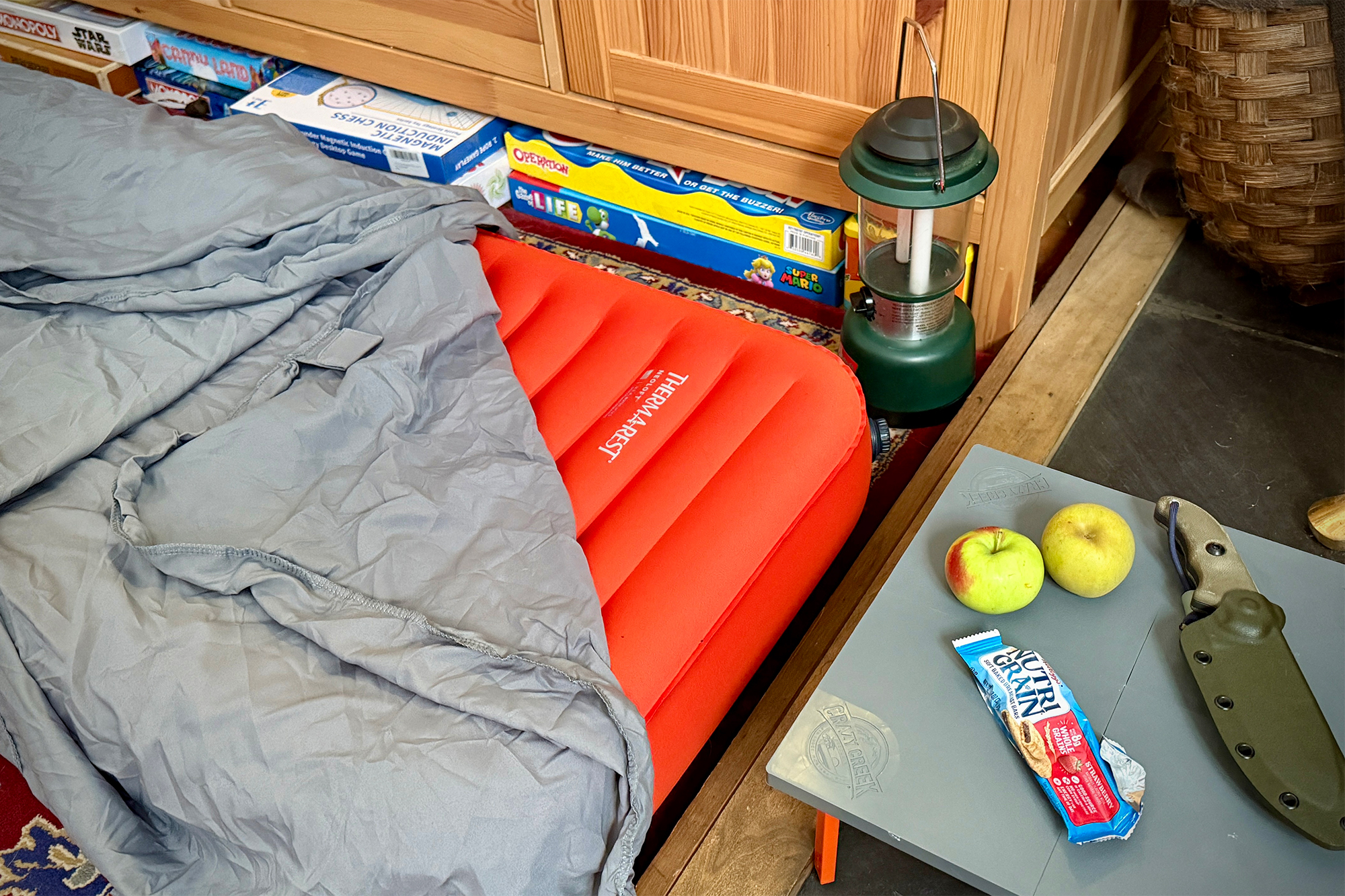
Sleeping in my living room for the final two nights gave me a control test to compare with. The temperature inside was 68 degrees, and the wood floor and area rug were both flat and even.
On all six occasions, the sleeping pad never lost firmness. However, on three of the nights — two in the woods, one in my living room — I rolled off the pad. In those instances, I woke up cuddling it like a teddy bear.
I’m a bigger guy, and I move around a lot, especially when I am not at home in bed. Though the built-in side rails of the NeoLoft aid in its comfort, they couldn’t hold me in place.
I woke up with my ribs against the forest floor at an odd angle and was not a happy camper for a few hours. This was not a deal-breaker for me, however. The NeoLoft’s thicker, firmer cushion still beat hanging off of a 3-inch-thick Therm-a-Rest NeoAir (as I have for the last 8 years).
So, if you’re a little wider, I recommend you consider the Regular Wide or Large NeoLoft pads. At 5 inches longer and 4 inches wider, the jump to the Large from the Regular will be noticeable. However, its pack size is the same as the Regular Wide and only 2 ounces heavier. Sizing up will add a slight cost — $10-20 extra for the Regular Wide and Large, respectively.
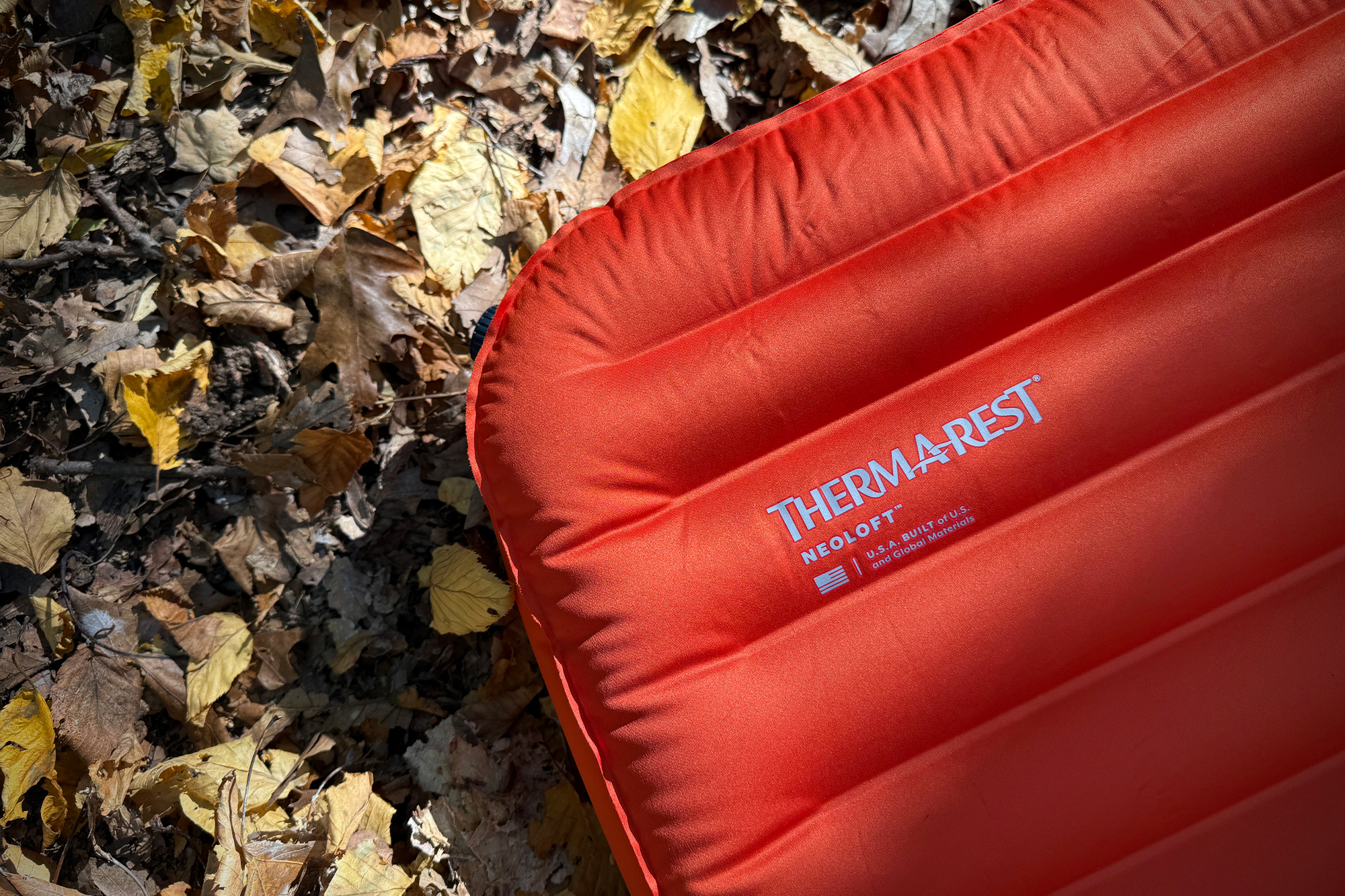
I woke up with my ribs against the forest floor at an odd angle and was not a happy camper for a few hours. That being the case, if you’re a little wider, I would recommend you consider the Regular Wide or Large NeoLoft pads.
At 5 inches longer and 4 inches wider, the jump to the Large from the Regular will be noticeable. However, its pack size is the same as the Regular Wide and only 2 ounces heavier.
For reference, the pack size of the Regular NeoLoft is 5.7 x 9.5 inches and weighs 1 pound, 9 ounces. The Regular Wide and Large are 6 x 11 inches with a 2-ounce difference in weight (1 pound, 14 ounces, and 2 pounds, respectively).
Pro tip: There’s enough room in the stuff sack for the NeoLoft and the Flextail or another small pump of your choice.
How’s It Sound?
One of the recurring concerns with sleeping pads made from lightweight, durable materials is how much sound they make — think swishes and crinkles.
I am happy to report that the materials used on the NeoLoft are some of the quietest I’ve tried. Does that mean that it’s completely silent? No. But it’s quieter than the majority.
Weight Trade-Off
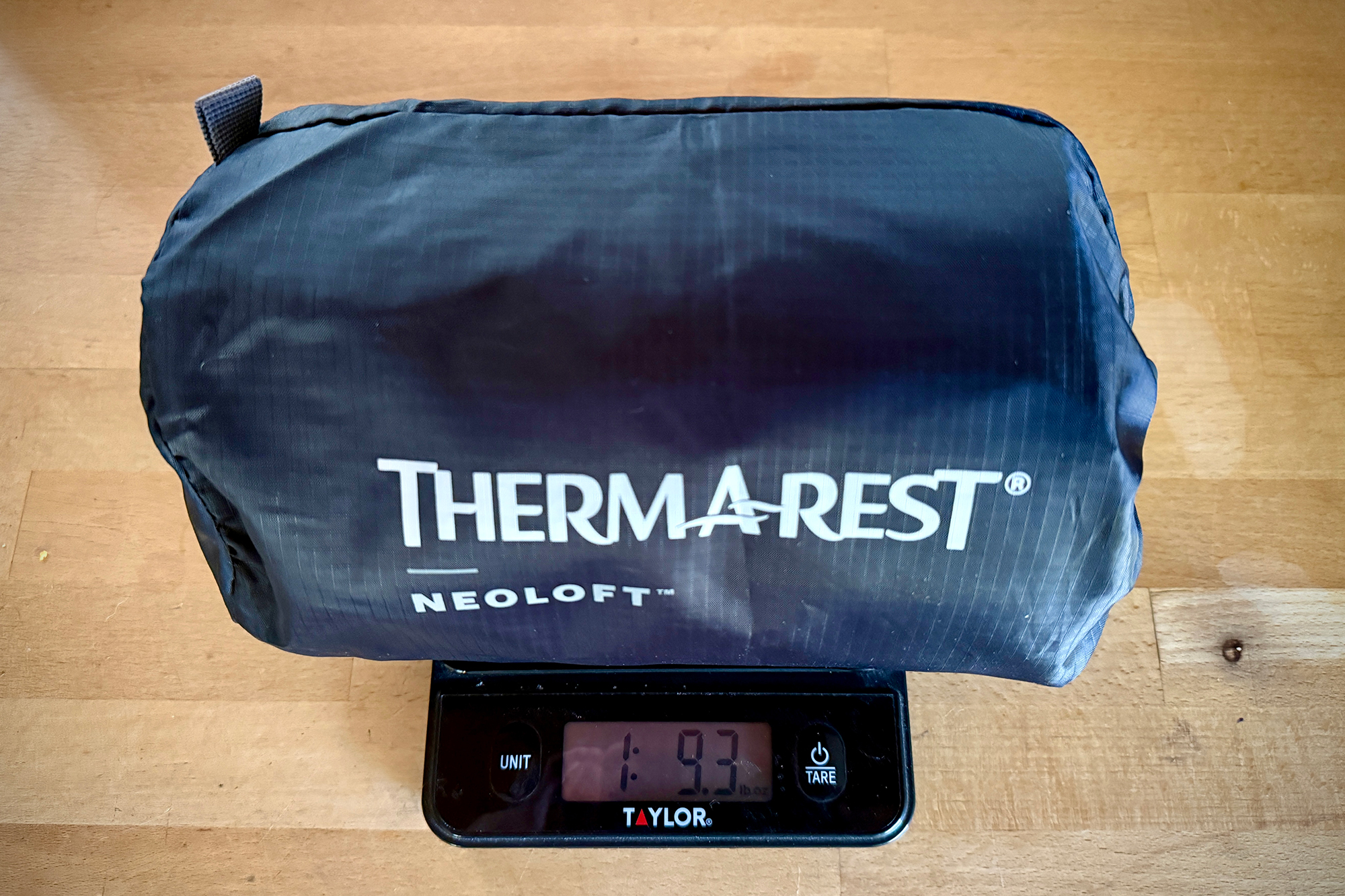
The average backpacking sleeping pad weighs under 1 pound packed. The NeoLoft weighs nearly 2 pounds in its stuff sack. This might be a turnoff for anyone counting ounces. Compared with those in our Best Backpacking Sleeping Pads guide, the NeoLoft sleeping pad would be the fifth heaviest.
The NeoLoft, in my opinion, is a luxury sleeping pad. It uses its rectangular shape to add more room, and its double-stuffed volume is a boon for comfort. The pad is an incredible innovation that most will welcome with open arms and less-achy backs.
Food for thought: When comparing the NeoLoft pad to a pad like the NeoAir, the NeoAir is the “need to have,” while the NeoLoft is the “nice to have.” For my money, it’s worth the upgrade if you can spare a pound in your pack.
Therm-a-Rest NeoLoft Sleeping Pad: Conclusion

Along with the rest of the backpacking community, I have convinced myself over the years that I don’t need to be that comfortable sleeping when I camp. It is more important that my sleeping pad packs down to take up as little space as possible in my backpack.
A sleeping pad that inflates to almost 5 inches thick could pack down to be as small as a Nalgene, which would have seemed too good to be true just a short time ago.
Still, I haven’t tested it in below-freezing temperatures. The coldest it ever got at night was 36 degrees, but even then, I couldn’t feel the ground’s cold creeping up through the pad. With an R-value of 4.7, the pad should suffice for year-round camping in most conditions.
If you’re looking for a lightweight, compact, comfortable sleeping pad that is good for all seasons, this sleeping pad has your name all over it. Within one use, you’ll appreciate how easy it is to inflate and fine-tune its firmness.
You’ll also appreciate its comparative quietness. And in the morning, after you’ve gotten a wonderful night’s sleep, you’ll love how quickly it deflates. All in all, the Therm-a-Rest NeoLoft is the total package sleeping pad I’ve been waiting for.
